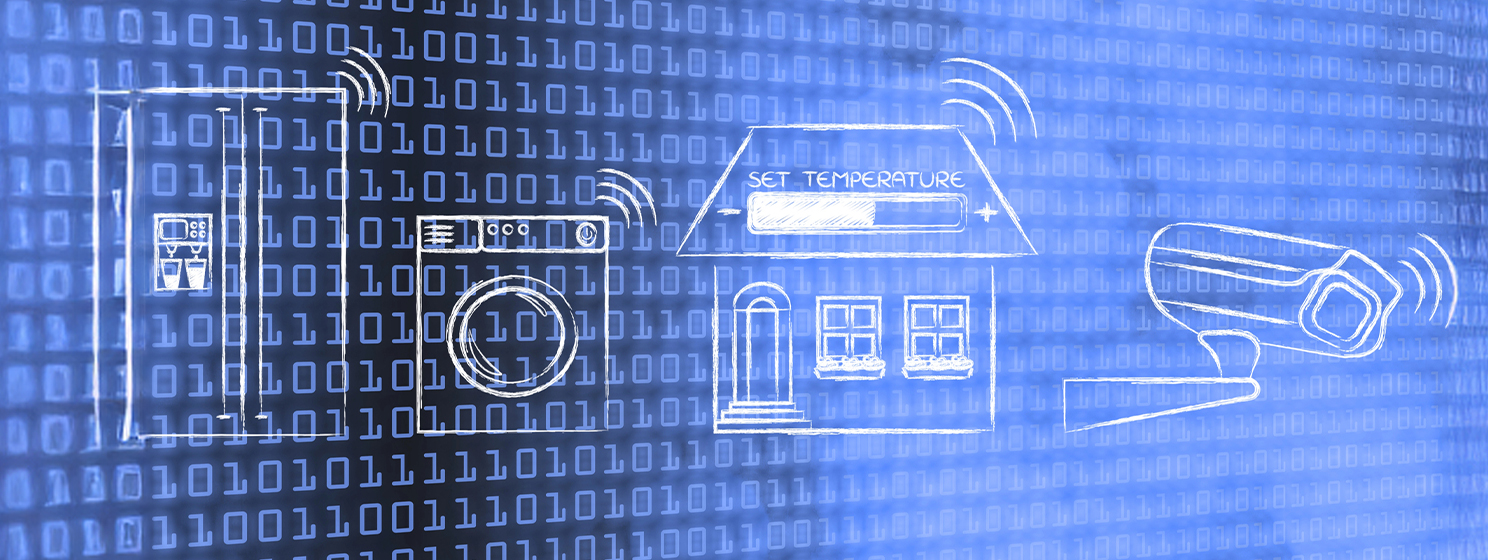|
Getting your Trinity Audio player ready...
|
While browsing X recently, I came across a startling post in which a poster, @Johnie, realized his LG washing machine had used 3.6GB of data in a single day.
Since the average HD movie uses between 2GB and 4GB of data, I was curious: What is a washing machine doing that would require this much data usage?
After reading a few funny suggestions in the comments about hackers using the washing machine to mine BTC on the sly, I realized that the Internet of Things (IoT) isn’t some future idea in a sci-fi world still to come—it’s already here, and it’s only going to pick up pace.
What is the Internet of Things?
IoT is a network of physical devices like fridges, TVs, and computers embedded with software, sensors, and connectivity. Being connected to this network enables them to collect, exchange, and act on data without human intervention.
For example, smart thermostats collect temperature data, learn your preferences, and adjust heating and cooling automatically. Connected cars use GPS systems to give real-time traffic updates and plan routes. Connected factories use IoT sensors to monitor machine performance and predict maintenance needs. Even agriculture is getting an IoT upgrade.
Almost every new appliance can connect to the IoT. Automated grocery replenishment, drone deliveries, and smart cities monitoring everything from air quality to energy usage are on the horizon. The IoT may be a quiet revolution occurring in the background, but it’s a revolution, nonetheless.
A clear answer to just what that washing machine is doing
While the LG washing machine mentioned at the beginning of this story likely used 3GB of data due to a software update or data upload to the manufacturer, the point remains that there was no clear way to find out. Blockchain technology can change that.
Companies like Rekord are using the BSV public blockchain to provide clear, transparent, and verifiable records for IoT devices. While records are usually buried deep in some corporate servers, blockchain can make everything more transparent and easier to verify.
How so? Every transaction can be written to a public ledger for a fraction of a cent. BSV can currently do around 10,000 transactions for a penny, so the cost of making everything transparent and clear is negligible. However, verifiable records aren’t the only benefits of running the IoT on a scalable public blockchain.
Why run the IoT on a blockchain like BSV?
Blockchains come with tokens and digital currencies that usually have monetary value. This enables a whole range of interesting use cases:
Automated Service Payments: IoT devices like electric cars can pay for services like charging or road tolls using digital currencies like BSV. Streamlining services like this would create noticeable efficiency gains and extra user convenience.
Data Monetization: Rather than allowing the manufacturer to harvest all of the data and use it in whatever way they please, blockchains allow users to monetize their device’s data. Interested parties such as researchers, artificial intelligence (AI) developers, and others could pay for your device’s data with micropayments.
Resource Sharing Between Devices: IoT devices could trade resources such as bandwidth and storage with each other. Micropayments handle the financial side, while the blockchain provides immutable records of how much was paid, when, or for what reason. Unlike bank records, which are IOUs on private servers, digital currencies operate as cash, meaning payments are settled on the spot.
Aside from these opportunities, a blockchain-powered IoT would be more private and secure. Whereas records could technically be intercepted by digital snoops today, they’d be encrypted on a blockchain network, and hackers attempting to attack powerful Bitcoin nodes would have a difficult time doing so.
In short, scalable blockchain technology makes the IoT better in multiple ways. Not only could X user Johnie find out what the 3GB of data used by his washing machine was for, but he could have been paid for it, too!
Watch: IoT, IPv6 and the future of monetization

 12-18-2025
12-18-2025 




